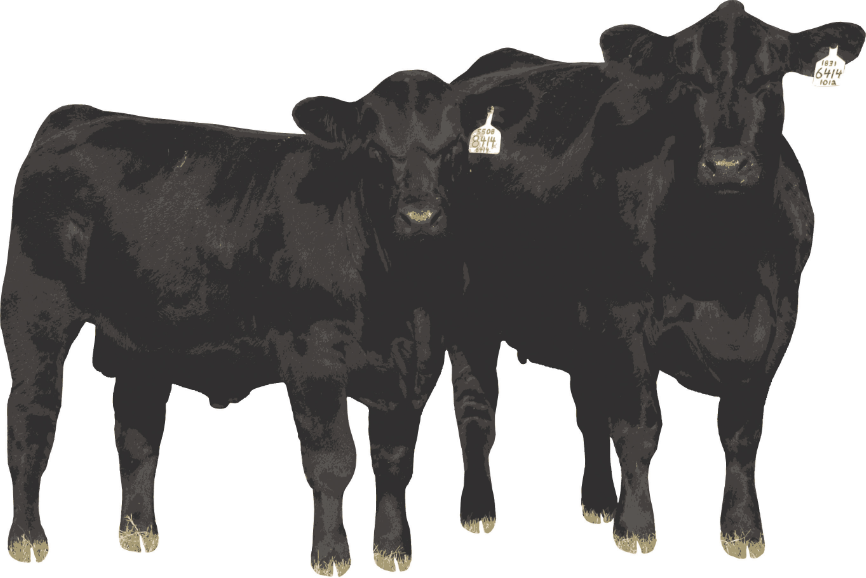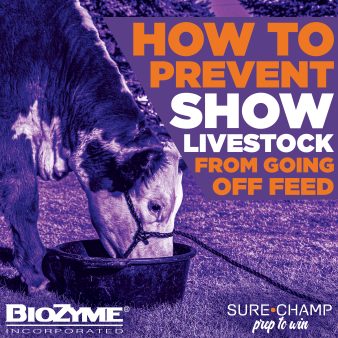 Although calving season has barely started for many cattlemen, thoughts of next year’s breeding decisions have already begun. In addition to natural service and A.I., you may be considering embryo transfer. Flushing those cows with superior phenotype and genetics can be an easy way to make rapid improvements in the quality of your cowherd. However, flushing and embryo transfer comes with an elevated cost, so it is important to maximize the reproductive efficiency of our donors.
Although calving season has barely started for many cattlemen, thoughts of next year’s breeding decisions have already begun. In addition to natural service and A.I., you may be considering embryo transfer. Flushing those cows with superior phenotype and genetics can be an easy way to make rapid improvements in the quality of your cowherd. However, flushing and embryo transfer comes with an elevated cost, so it is important to maximize the reproductive efficiency of our donors.
Kevin Glaubius, BioZyme Director of Nutrition and Technical Sales, and Dr. Susan Day, BioZyme Nutritionist, have put together nutritional guidelines for donor cows to help you achieve maximum results.
The Situation
Typically most donor cows are in smaller pastures or runs. This smaller area means cows aren’t walking several miles per day and this can lead to overweight cows. It is important to watch the energy levels of your rations as these donors typically have relatively low maintenance requirements.
The balance of several hormones naturally controls the reproductive cycle. Many of these hormones are fat-soluble, meaning their effectiveness is reduced if the donor is too fat. This can result in the reproductive cycle being altered or stopped altogether. Excessive fat also often means your practitioner will likely have a more difficult time synchronizing the cycle, leading to less than optimal results.
Nutritional Needs
With reduced energy requirements perhaps we should rethink our current feeding strategy? Many producers often provide these high value cows with a higher plane of nutrition than the rest of the herd. However, in reality we only need to be meeting basic energy and protein requirements with limit fed rations.
To ensure that donors are still receiving all the vitamin and minerals necessary to improve reproductive health feed VitaFerm Concept-Aid 5S for at least 60 days prior to flushing to see the full effects. Concept-Aid contains the proper balance of macro and micro trace minerals and a unique balance of vitamins to maximize the reproductive potential in your donor cows. Concept-Aid also contains Amaferm, which improves digestive efficiency and as a result helps the animal’s ability to deal with heat stress. The cooler we can keep cows the more likely we will see reproductive success. Concept-Aid is available in both a free choice loose mineral and a pellet that works well for mixing in with complete rations.
Four weeks prior to flushing increase the amount fed to donor cows by 10%. This will put the cows in a positive energy balance. By switching the cows from a maintenance diet to a higher plane of nutrition we help jump-start the reproductive cycle.
After Flushing
Hopefully now you have experienced the results you were expecting. If the flushing period is over it is now time to turn your donor cows back out. Increased exercise and weight loss is a good thing during this period. Producers again need to pay attention to donor rations during this time. If donors have access to high quality feed it may be important to limit feed or restrict the amount of access so they aren’t gaining additional weight.
During this time we also recommend that you continue to provide Concept-Aid through the next flushing period or until your donor is bred.
For more information or ration consultation, please contact champ@biozymeinc.com.


I just wanted to tell you the wonderful results we have seen from using the Conceptaide mineral. Ken Gillig got us started on this back in September, and all of our breeding cattle are on this now. We strictly AI or put in embryos, so fertility is extremely important to us. Last spring, we had lowered conception rates, partially due to the drought the summer before and the lack of good quality hay available over the winter here in SW MO. This fall, we had 100% conception from our embryo implantation, and 70% conception from the first AI attempt. We are pretty pleased with those results. Also, all of our cows that have calved since December have returned to heat prior to the 30 day mark post calving! That also says something for the condition of our cows. Our recips that calved will have to wait another 30 days for implantation again, since we want calves born after January 1st, but to see all those recips cycling already makes us happy, and our vet is impressed. I truly feel the new mineral has helped bring our cattle to the next level making conception more attainable! Thank you
Fire Sweep Simmentals